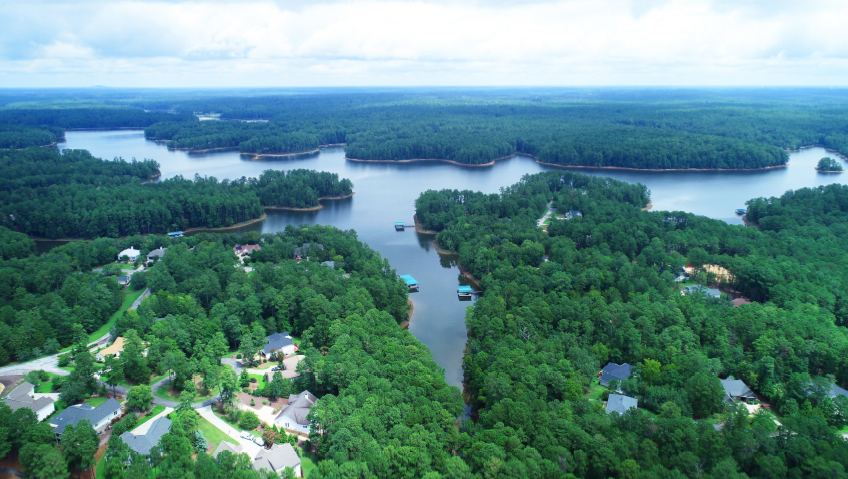Almost a century after its founding, the Tourism Industry Association of Canada (L’Association de l’industrie touristique du Canada)—better known as TIAC/AITC—remains dedicated to its vision and mission: leading Canada’s tourism industry to be the most competitive in the world; serving as the voice of the nation’s tourism industry; and “improving its global competitiveness as an international destination through leadership and advocacy.”
The history of the organization goes back to 1930 when it was known as the Canadian Tourist Association. One of the country’s oldest member-based organizations, it was rebranded in 1977 as the Travel Industry Association of Canada.
Encouraging travel to and within Canada, the newly-named TIAC was committed to increasing the economic and social benefits of travel and tourism for all Canadians, promoting the growth and development of travel services within the country, and increasing awareness at all levels of government about the economic and social benefits of travel and tourism to the well-being of Canada.
About 20 years later, the marketing portion was carved off, and a pledge was made to the Prime Minister of Canada at the time that TIAC would do everything possible to ensure the Canadian Tourism Commission (now Destination Canada) became a reality by 1995.
Today, TIAC and Destination Canada work hand-in-hand, ensuring Canada is marketed as a destination of choice.
Continuing to grow, TIAC has a base of over 600 members and thousands of affiliate members across Canada. This encompasses everything from large national and multinational companies to medium and small enterprises, all contributing to the vitality of our travel and tourism sector.
Under the experienced leadership of President and Chief Executive Officer Beth Potter, TIAC continues to strive for the success and prosperity of Canada’s tourism sector, and so, all Canadians. An important economic contributor, tourism is Canada’s second-largest contributor to gross domestic product (GDP) at $40 billion a year, topped only by oil and gas. Before COVID, the nation’s tourism industry was responsible for 1.8 million jobs and worth $105 billion in total economic activity.
Since the start of the pandemic, the travel and tourism sector has taken a beating like no other. All related industries, from airlines to hotels, and entertainment venues to restaurants, experienced months of on-again / off-again closures, safety protocols such as occupancy limitations and social distancing, border closures, and many other problematic issues.
Today, over three years since the first reported cases of COVID-19, the Tourism Industry Association of Canada continues working on behalf of its members in travel and tourism.
In 2021, some of TIAC’s successes included the passing of Bill C-2 in late December. This new support—the result of months of advocacy—helped to ensure that the country’s tourism industry, the ‘Hardest-Hit Sector,’ would continue to receive wage and rent relief, saving thousands of jobs from disappearing.
That year also saw other major advocacy initiatives, as TIAC worked with industry partners to secure the Tourism Relief Fund—$500 million in support to the sector over two years.
“The majority of the funding, $485 million, will be delivered by Regional Development Agencies (RDAs) directly to tourism businesses and organizations to help aid in the creation of new tourism experiences, or enhance existing ones,” said TIAC in a media release. “Of this $485 million, a minimum of 10 percent will be invested in Indigenous tourism projects.”
That November, TIAC released its Briefing for National Policy Forum: Priorities for Tackling Labour Challenges in Tourism. Addressing the unprecedented shortfall of workers and major structural changes, the document makes policy recommendations to address issues including supply, skills, mobility, and education and training reform.
Last year saw Potter and her team continue their efforts to help rebuild Canada’s travel and tourism industry. This included working with Tourism HR Canada and government partners to start addressing tourism labour challenges and advocating that COVID testing requirements be updated to remove pre-travel testing requirements.
The team also provided a thorough pre-budget submission to the federal government “with industry input and support, positioning key advocacy recommendations into three priority areas: Financial Supports, Branding and Barriers, and the Labour Shortage,” and many other initiatives helping Canadian travel and tourism to rebuild.
Before last fall’s federal budget, TIAC released Tourism: A High Potential for Economic Growth. Among its dozen recommendations were allocating millions toward domestic recruitment campaigns and an Indigenous Workforce Strategy; financial measures supporting “the creation, maintenance and refurbishment of tourism assets, including a new tax credit for retrofits and upgrades”; the introduction of a National Meetings, Incentives, Conferences, and Events Fund, and others.
“The Government of Canada certainly has been supportive over the last few years, in particular our Minister of Tourism and Associate Minister of Finance, Randy Boissonnault,” says Potter. “Our recommendations in the pre-budget submission this year support the recommendations we put in around a call for a new federal tourism growth strategy. Our industry was just devastated by the impacts of the pandemic, and we’re looking at how we can reinforce, encourage, and grow the workforce in our industry,” she says.
“Also, we want to make sure there’s an ongoing investment in the infrastructure of our industry so that our assets are up to date and that they’re telling the best story that Canada can. So far, our recommendation seems to be heard. But the budget comes out in the spring, so we have to wait and see. We’ve got a few more months before we understand how well the government heard us.”
As Canada’s travel and tourism industry emerges from under the dark cloud of COVID, TIAC/AITC members are rethinking how they operate. Many businesses were closed completely during the pandemic because of various restrictions. Although challenging, this allowed businesses to pause and ask questions about how things were changing, including a shift in consumer needs and desires.
“It had started before the pandemic, but this allowed us to get into it in a much deeper way, focusing on how businesses are operating sustainably and asking how they are developing their own capacity,” says Potter.
“It is more than just eliminating single-use plastic,” says Potter. “It’s really about the entire ecosystem. So this is a big, complex thing to tackle. There are so many different kinds of businesses in our industry, but the positive reaction we’ve had from the industry to the training we’ve made available has been amazing,” she shares.
“We’re also doing a lot of training to make sure businesses can line up what they’re doing with their sustainable development goals. Much of the time it looks big and scary and they don’t know where to start, so we’re trying to make that as attainable as possible for them.”
One of TIAC’s many successes over the years was securing $95.5 million in annual permanent base funding for Destination Canada. Since travel and tourism were seriously impacted by the pandemic and slow to recover, TIAC will push the Government of Canada to hold this funding level at $95.5 million a year, so that Destination Canada’s access to the tools and marketing it needs can continue.
“Destination Canada’s budget is about the same size as California’s,” comments Potter, “so we want to make sure Destination Canada is armed with the budget to go out and promote Canada as a destination, especially in the business event sector. Business events, conferences, and trade shows make up 40 percent of our overall industry. To put that in perspective, if we lost our business events it would be like taking Ontario’s tourism industry out of Canada.”
Naturally, the Tourism Industry Association of Canada promotes several major industry events. These include the TIAC Tourism Congress, taking place in Ottawa on November 21 and 22, and Rendez-vous Canada (RVC). Co-produced with Destination Canada, invitation-only Rendez-vous Canada, to be held at the Québec City Convention Centre, runs from May 30 to June 2.
“That event is really to drive business between international buyers that want to sell Canada destinations within their own country,” says Potter. “As you can imagine, there are a lot of meetings. Last year, we had over 50,000 meetings between all those folks in the three days. They’re done in 15-minute increments. The whole idea is to give small businesses, in Canada especially, an opportunity to meet with international buyers to promote their product or experience at the international level.”
The event saw about 500 international buyers and another 600 to 700 Canadian tourism businesses engage in matchmaking appointments between buyers and sellers.
Celebrating tourism across the country with a week dedicated to the industry, this year’s theme is Canada: Powered by Tourism (April 24-30), which highlights how tourism helps animate communities and provides jobs and economic growth at the community level.
TIAC is also active with the Future Borders Coalition, and is on the organization’s board of directors, serving as Vice-Chair. Predating the pandemic, the bi-national Coalition is dedicated to bettering the Canada / United States border for travel and trade and comprises organizations from Canada and the U.S. involved in all modes of transportation, tourism, and academia.
“It looks at all the policies, the technology, the processes, the legislation that is needed on both sides of the border to facilitate the movement of goods and people,” says Potter. “And it’s an organization that brings governments together, from both the U.S. and Canada, to have very focused conversations on transportation policy, immigration policy, and other border-related policies.”
Now that border restrictions have been lifted, Canada is again welcoming tourists from its biggest international market—the United States—and expects to see cross-border travel accelerate this year. The forecast sees it hitting 80 to 85 percent of 2019 levels in 2023, with full recovery by 2024.
And even with travel restrictions in China and the impact of the recession in Europe, TIAC says overseas travel to Canada will recover modestly this year to somewhere between 60 and 65 percent of 2019 volumes, rising to 90 percent in 2025 with full recovery by 2026.
“When we think about the future of tourism in Canada, our organization is here to make sure that businesses within the tourism sector have the ability to provide those outstanding experiences that Canada is known for, those great interactions with Canadians that visitors talk about with a glint in their eye and a smile on their face. That’s what we want to make happen.”
Sidebar:
Beth Potter On Destination Development:
“We have a community of all sizes of destinations from across the country that we’re working with; from major city centres like Toronto, Vancouver, and Montréal, down to smaller places like Sherbrooke or Saskatoon, and even smaller than that, like Barrie, Ontario,” says TIAC President and Chief Executive Officer Beth Potter.
“We’re working with those organizations to support them in the work that they do and their municipal governments and local businesses. Supporting local and buying local are huge themes, and also wanting to make sure that those main streets are vibrant and animated. So that means a multi-step approach,” she explains.
“If you want main streets to be revitalized, you have to look at everything from who the shops and the retailers and the businesses are on Main Street, to who’s living on Main Street. You won’t have a vibrant, thriving Main Street if it relies only on visitors to your destination; you have to take into account your residents as well. The people who live and work there have to be an active part of what that revitalized downtown looks like.”






